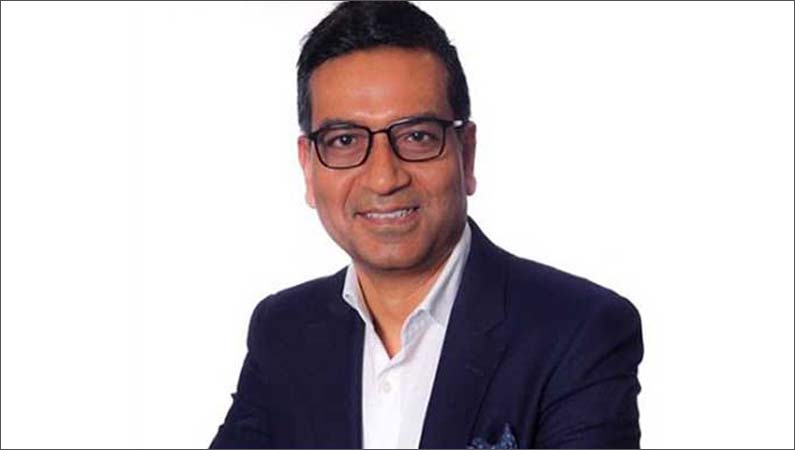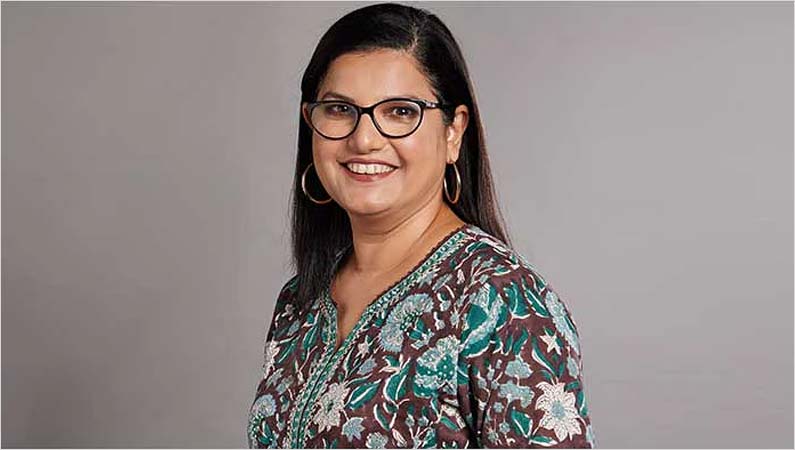Srivastava, GroupM Asia Pacific CEO, told e4m that China, India and Australia are the top three markets for the agency in the region
GroupM Asia Pacific CEO Ashutosh Srivastava, who recently visited India after a gap of over two years, has asserted that China, India, and Australia are the top three markets for the agency in APAC. Speaking to exchange4media, Srivastava also said that the Indian market rivals the Chinese market when it comes to volume of activities, clients, growth, and rupee-dollar exchange rate. He spoke on a range of topics from diversity in the Asian advertising market to talent acquisition/retention and GroupM's responsible investment policy.
From a global perspective, how important is the Asia Pacific region and within that the Indian market for GroupM?
Based on the 2021 performance, APAC represents almost a quarter of GroupM's global revenue. Around 12,000 of the 36,000 people that we employ are in APAC. There are thousands of global and Asian clients, which include Indian and Chinese companies, that are also expanding their footprint outside of their home markets. So, for them, the journey begins in this part of the world and then they go westward. The scale of our operations is quite huge.
In the global scheme of things, APAC for us is more important than all the other holding companies just in terms of relative weight and share. That is not out of some fluke but it is due to the fact that WPP decided to invest in Asia ahead of the curve and therefore built a very robust business in this part of the world. We have got a great bunch of leaders in every country who are highly connected and well regarded in their countries. We also have a great bench of leaders below them.
We have a lot of focus on talent everywhere.
Within APAC, China, India, and Australia are the top three markets. Even globally, China, India, and Australia will feature in the Top 10 for GroupM as well as WPP. China will be probably 3 or 4 and India will be 5 or 6. It's quite a large-scale operation.
If you go back 12 to 13 years, when the Indian rupee was Rs 25 to the dollar and you compare just in rupee terms and if it was the same exchange rate, then India would be double the size of the current business which makes it as big as China. When I look at it from a global perspective, it is of course China, but if I look at the volume of activities, clients, growth, and when you factor in the rupee-dollar exchange rate, it’s a similar size business. So, the Indian business is quite a powerhouse.
What are the differences and similarities among the countries in APAC from a media and advertising standpoint?
There are differences and there are similarities. Differences are largely cultural which is why we are different countries. India is lucky that politically it is one country. Despite all the cultural differences and different states, there is one regulatory environment, one set of rules, one media...so you can still operate here.
If you look at ASEAN countries, they have a trade agreement, but culturally they are different from each other and all are moving at different paces. Yet, if you collectively put them together, it is 700 million people. If they were a single country, it would be similar to India with an even higher per capita GDP. Getting enough talent is a challenge because these countries don't have the same population as India or China. It is difficult to get that many people at a consistent level to drive the business.
The opportunities are that all of them are undergoing the transformation of their economies at the same pace. The impact of the pandemic; the shift to the digital economy is impacting everything in media and marketing in the same way. Broadcasters are building digital capabilities just like Indian broadcasters who have launched their own OTT platforms. In Southeast Asia, it is now catching up because the individual markets that those broadcasters serve are only 60 or 70 million. There is not enough money for some of those things so they take the easier route like putting the content on YouTube for free before they invest in technology to build a strong OTT platform.
Otherwise, the direction of travel is the same. Due to higher literacy and penetration of digital devices, the consumption of OTT is higher, and therefore the money that we spend on digital as a share of the overall marketing is higher in those countries.
That will be true for India as well. If you go to UP, the digital penetration will be less but if you go to southern states, you will find that the digital penetration will be higher. There are lots of similarities. There is an e-commerce boom here in India, there is an e-commerce boom in Southeast Asia. Homegrown platforms here, homegrown platforms there. Homegrown platforms in Southeast Asia have managed to travel outside of their home markets due to investments from China in some of those companies.
What are the key growth levers for GroupM in APAC?
The biggest opportunity is the growing complexity as the money shifts from the simpler linear traditional media platforms to digital platforms. It becomes far more complex. On one hand, it becomes easy since you can identify who your customer is and what they are doing, but each platform is different from the other and they are like walled gardens. The complexity for the marketers and agencies is how do we form one single picture of how a consumer makes their decision. So, there is a big opportunity for us as agencies to solve that puzzle.
Each platform follows different practices when it comes to implementing campaigns so you need enough people with deep expertise because clients are giving you that money to spend on people who have mastered all the intricacies of how to get the maximum impact of the money spent on that platform. We play a role to build that kind of platform expertise in a lot of people who are specialists and who can work hand-in-hand with clients.
One of the new things we are trying on some clients is in the area of e-commerce where most clients have in-house capabilities because it is a sales channel but they want to bring it closer to marketing. We are the bridge between marketing and sales because we have embedded our people into their organisations who are sitting there working with both. I see commerce as a huge opportunity because each platform is a walled garden for us to deepen our expertise in order to piece together a single picture. We also see an opportunity in the adoption of technology by consumers and the coming of Web 3.0. Being a dominant player in many markets, we have to play a role in setting up that ecosystem.
Also, the world today is different from what it was a few years back. Today, there is a lot of consciousness about data privacy, brand safety, and sustainability. Every global company has strict Environmental, Social, and Governance (ESG) related goals. Sustainability is a massive agenda that again throws up a bunch of opportunities for people like us. If you look at all the marketing money that is spent it is also leaving a carbon footprint. A little bit of it is people moving from one place to the other but the bulk of it is in the media supply chain. For us, the opportunity is how to bring all the clients on this journey and put pressure on the entire media ecosystem to make it sustainable.
How big a challenge is it to find and retain talent?
Our main challenge in Asia and India is finding people fast enough because there is a huge demand. There are people with experience but there are a lot of fresh young people who are native to the digital economy who will give an arm and leg to this business and learn and go and make an impact. A lot of these youngsters are wired differently from the previous generation because they are more responsible towards the environment and want to see a more sustainable future. That is throwing up interesting opportunities just in terms of talent development. There is demand for talent in all the markets but what will change is where we get this talent from.
The demand is huge and we can't just hire from the industry because everyone has the same problem. We have to recruit talent at the entry-level and train them up by giving them the foundational fundamentals and taking them into different streams on a much larger scale. We are also hiring talent from other industries like business delivery services (Accenture, Cognizant), and platform businesses (Amazon, TikTok). People go there to learn certain things and then they see what's missing and when they come to the agency world it is a much broader remit than just trying to optimise something on Amazon. Last year, we had 2,000 applications from these kinds of businesses. These are the two main sources of intake that we are going to have. We have a 20% increase in demand every year. Currently, we have 12,000 people. Every year, we have to hire 2,500 to 3,000 new people because there will always be churn.
How do you create a balance between your larger business interests and supporting independent creators to build a more diverse and inclusive media ecosystem?
There are many pillars to responsible investment and the reason why it is there is that we decided that we will give everyone a sense of purpose in GroupM. This is not just about coming to work and interacting with colleagues, clients, and media partners. It is about what we do to make advertising work better for people because there are lots of unsafe brand environments, ad frauds, and the concentration of money into just a few platforms to the detriment of others who are serving other sections of the society. A plain free market that is purely determined by commercials of the lowest cost of reaching someone will reduce the market to a duopoly that is not in anyone’s interest.
You have to drive everything from data privacy to brand safety to making sure that content creators serving different sections of society thrive. All of these are equally important and this decision should not be taken purely at the lowest cost. It’s a journey that we are on with clients. It will not happen overnight and these conversations happen at the top with CMOs. All those organisations are also creating a sense of purpose for their brand. Thinking at the top is exactly the same and we are merely a reflection of this change in the market to become more responsible in the way money is spent where there is a diverse and equitable marketplace, there is no concentration of power and environments are safe, and money is being spent well and there is sustainability in each of these actions. Each of these aspects is part of the responsible investment framework.
How was 2021 for GroupM and what kind of growth are you expecting in 2022?
2021 was partly rebound and partly new money coming in. The rebound effect may not be there in 2022. In that sense 2021 was exceptional as both factors were working. From now on, one would see more of the second factor of the new money as market players’ demand for more help in creating bigger brands. The marketplace has broadened permanently because there are more people spending more money. I would expect that to continue.










